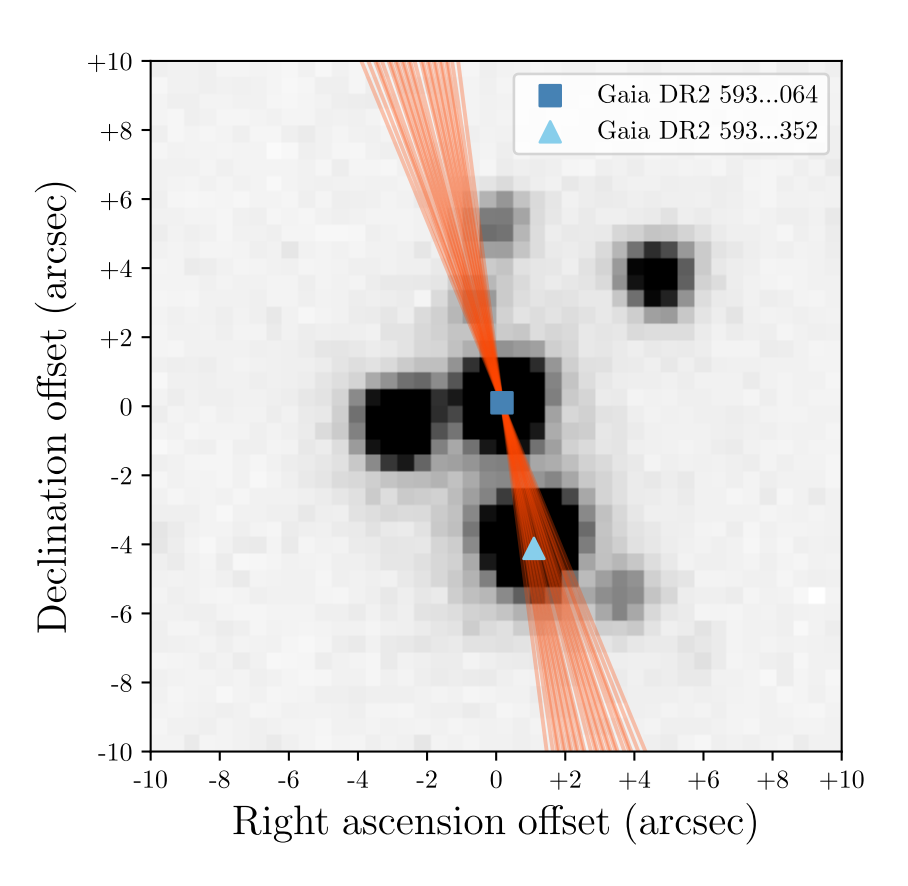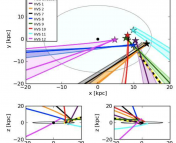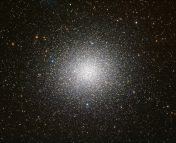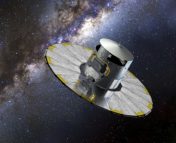Title: Lessons from the curious case of the ‘fastest’ star in Gaia DR2
Authors: D. Boubert, J. Strader, D. Aguado, G. Seabroke, S. E. Koposov, J. L. Sanders, S. Swihart, L. Chomiuk, and N. W. Evans
First Author’s Institution: Magdalen College, University of Oxford, UK
Status: Accepted in MNRAS, closed access
‘Hypervelocity’ stars move fast. So fast they can escape from the gravitational pull of the Milky Way. A few tens of hypervelocity stars are known but the Gaia space telescope is expected to find hundreds more as it maps the positions and velocities of stars in the sky. Stellar velocities from us are split into their tangential velocity (how fast it moves across the sky, a.k.a proper motion) and radial velocity (how fast it moves towards or away from us). Combining them together using trigonometry gives the star’s total velocity.
Gaia radial velocity
As the Gaia pipelines are still being improved to combine these velocities, only stars with radial velocity greater than the escape velocity of the Milky Way (600 km/s) are guaranteed hypervelocity stars. Currently one star meets this criteria: Gaia DR2 5932173855446728064 (which we’ll call Gaia ‘064 for short). Gaia ‘064 has an incredible radial velocity of -614.286 +-2.492 km/s, calculated as the median of seven individual measurements. Figure 1 shows Gaia ‘064 is in a very crowded field on the sky, with nine neighbouring stars within 8 arcsec, noticeably more than the other 34 potential hypervelocity stars tested.

Following up
As Gaia ‘064 is in an abnormally crowded field, the authors took follow up spectra to verify the Gaia DR2 radial velocity. Using eight spectra from the SOAR telescope taken between 5th May and 16th September 2018, they calculated a median radial velocity of -56.5 +-5.3 km/s.
Explaining the difference
Clearly, the Gaia radial velocity is significantly larger than the follow up value. The authors explore two scenarios to explain it, one where the Gaia measurement is true and another where it is incorrect.
Scenario 1: Gaia was right
Gaia ‘064 could have a large radial velocity shift in an extreme binary star system. Here, the radial velocity measured at a given time is the sum of the binary system’s velocity relative to us and the star’s orbital velocity within the binary, so the radial velocity changes as the star orbits. However, testing this scenario is hard as Gaia does not record the times it took the radial velocity measurements. We only have 42 predicted times over two years when Gaia could observe the target from the ESA Observation Forecast Tool. If Gaia measured orbital velocity shifts of ~500 km/s, the error would be higher than 5 km/s. However 26 of the possible 42 times occur within 3.75 days, so if all seven measurements were made then, they would still be consistent with each other if the binary is long period.
Combining all 15 radial velocity measurements, they find the orbital period must be longer than 1000 days and the minimum mass of the unseen companion is 3000 solar masses, making it an intermediate mass black hole (IMBH). Gaia ‘064 does have an unusually large number of neighbouring stars which is expected around an IMBH. However, Gaia ‘064 is young, whereas IMBHs are expected to host much older stars. Additionally neither of two neighbouring stars the authors examined had extreme radial velocities. One neighbour actually has a very similar radial velocity to the target’s follow up radial velocity, suggesting it is co-moving with Gaia ‘064 and that Gaia ‘064 is not orbiting a black hole.
Using just their eight follow up radial velocities, the authors find the target is more likely to be in a close stellar mass binary with a radial velocity of -62.5 +- 5 km/s, than on its own or in a long period binary. Note this is not conclusive and as their data are taken close together in time, the target could still be in a long period binary.
Scenario 2: Gaia was wrong
Quality cuts have already been applied to remove unreliable radial velocities, so perhaps Gaia ‘064’s measurement is spurious due to its unusually high number of close neighbours. Gaia’s spectrograph records the spectra continuously as it scans the sky. The pipeline can separate measurements for stars more than 6.4 arcsec apart. If the scanning direction (shown by orange lines in Figure 2) happened to pass through two stars closer together than 6.4 arcsec, their light blends in a single spectrum.

Gaia’s spectrograph will offset blended light by 145.1 km/s per arcsecond. Most of the time, these measurements should be filtered out as two sets of lines implies a spectroscopic binary. One close neighbour, Gaia ‘352, is only 4.284 arcsec away, giving an offset of 619-624.2 km/s. Subtracting this offset from its radial velocity in Gaia of 5.40 +- 2.85 km/s gives -613.6 to -618.8 km/s, consistent with the target’s Gaia radial velocity of -614.3 +- 2.5 km/s. Therefore, the anomalous radial velocity can be explained if the spectra were blended in all seven measurements. Combining this with the small error in Gaia’s radial velocity measurement makes it likely that all seven measurements occurred in that 3.75 day window, where all passed through both bright stars (shown in Figure 2). Therefore the light is likely blended and Gaia ‘064 an average, non-hypervelocity star.
Cleaning the catalogue
Many thousands of stars with Gaia radial velocity measurements have another source within 6.4 arcsec which also has a radial velocity measurement or is as bright. The Gaia colours pipeline discards the colours of stars where blends were suspected, so if a star has a radial velocity measurement but is missing GBP and/or GRP magnitudes then it may be a blend. To obtain a much cleaner catalogue, at the expense of completeness, the authors propose to remove stars which:
- Are missing either colour magnitude.
- Have fewer than four radial velocity measurements
- Have a neighbour within 6.4 arcsec with a radial velocity measurement or which is brighter in G or GRP magnitudes.
Applying the above quality cuts to the 202 stars with radial velocities greater than 500 km/s, only 90 survive. While some real hypervelocity stars are likely removed, this leaves a much cleaner selection to investigate hypervelocity stars.
Mapping hypervelocity stars
Hypervelocity stars may reveal something about the systems they are shot out of at speed, including massive black holes and supernova, and about galactic dynamics more generally. Unfortunately it seems that Gaia ‘064 is not part of this group. The case of Gaia ‘064 is a cautionary tale that if a number of unlikely scenarios line up, the results can be very wrong, so it is always worth checking!
Featured image: Artist’s impression of Gaia with Milky Way background. Copyright: ESA/ATG medialab; background image: ESO/S. Brunier.




